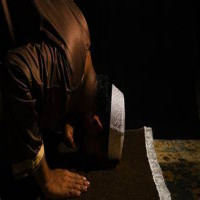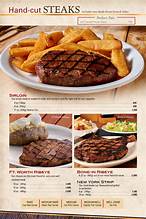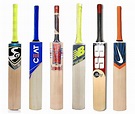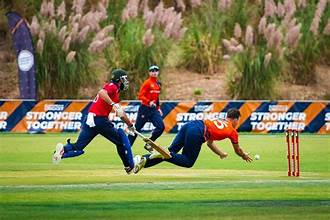Mastering the Game: A Complete Guide to Cricket bats

Strong 8k brings an ultra-HD IPTV experience to your living room and your pocket.
When it comes to cricket, one piece of equipment can define a player’s entire game — the bat. Over centuries, Cricket bats have evolved from simple wooden clubs to finely crafted tools engineered for power, precision, and style. Whether you are a budding player, an enthusiastic hobbyist, or a seasoned cricketer, understanding Cricket bats is essential to getting the best out of your performance on the pitch.
In this guide, we’ll break down everything you need to know about Cricket bats, from their origins and construction to how to choose, maintain, and maximize their potential.
A Brief History of Cricket bats
The story of Cricket bats dates back to the 1600s when cricket was a rudimentary game played with curved sticks resembling modern-day hockey sticks. As the sport gained popularity, the bats became straighter and thicker to handle the bouncing ball better. Over time, the traditional willow bat emerged as the gold standard — and today, top players swear by meticulously crafted willow Cricket bats for their unmatched performance and feel.
Understanding Willow: English vs. Kashmir
The core of any good cricket bat is the wood — and willow reigns supreme. There are two main types:
English Willow: Premium, lightweight, and highly responsive, this willow is grown in England and used by professionals worldwide. It produces excellent rebound, making it ideal for serious players.
Kashmir Willow: Grown mainly in India and Pakistan, Kashmir willow is denser and less costly. It’s great for beginners or players who don’t want to break the bank but still want quality Cricket bats for practice or casual games.
Always consider how often you play and at what level before choosing your willow. For weekend matches or backyard fun, Kashmir willow suffices. For league or competitive play, English willow is the clear winner.
Anatomy of a Cricket Bat
Every part of Cricket bats is crafted with purpose:
Handle: Made from cane and rubber, it reduces shock and offers grip control. Handles can be round or oval — round suits wristy players while oval handles provide directional stability.
Blade: The wide, flat face used to strike the ball. Its thickness and curvature influence power and shot range.
Spine: A raised ridge at the back, adding strength and ensuring balanced weight distribution.
Sweet Spot: The area that delivers maximum power with the least vibration. Different bats have the sweet spot at different heights — low, middle, or high — to suit playing styles and pitch conditions.
Finding the Perfect Size and Weight
Choosing the right size is vital. Cricket bats come in standard sizes, from junior to adult:
Sizes 1–6 are for young players, based on height.
Harrow is slightly smaller than adult size, good for teenagers.
Short Handle (SH) is the standard for adult men.
Long Handle (LH) is used by taller players or those who prefer extra reach.
As for weight, it’s a personal preference. A heavier bat generates more power but can slow your swing. A lighter bat allows for faster reaction and wristy strokes. Always pick up a few Cricket bats in-store to see which feels like a natural extension of your arm.
How to Knock In Your Bat
New Cricket bats — especially English willow — need “knocking in” to prepare the wood fibers for hardball impact. This extends lifespan and improves performance. Here’s how:
Lightly oil the bat’s blade with raw linseed oil.
Use a wooden bat mallet or an old ball to gently tap the bat’s face and edges for several hours over multiple sessions.
Test the bat with soft catches and gentle bowling before using it in a match.
Skipping this step can cause cracks or damage within the first few games. Some modern bats come “pre-knocked” but a little extra manual knocking is still recommended.
Essential Maintenance Tips
A quality bat needs care:
Re-oil lightly every few months but avoid over-oiling.
Store in a cool, dry place; avoid damp sheds or direct heat.
Inspect for cracks or splits; minor ones can be fixed with fibreglass tape or a bat repair kit.
Use a protective face sheet or toe guard for extra durability.
Regular maintenance ensures your Cricket bats stay match-ready for years.
Trusted Brands in the Market
Buying from reputable brands guarantees better craftsmanship and longevity. Top names include:
Gray-Nicolls: Classic designs used by legendary players.
Kookaburra: Popular for innovation and vibrant graphics.
SS (Sareen Sports): Affordable, sturdy bats widely used across Asia.
GM (Gunn & Moore): Known for balanced bats ideal for all-rounders.
Always buy from an authorized dealer to avoid counterfeit products — especially when purchasing online.
Final Words
A cricket bat is more than wood — it’s a player’s trusted partner, match after match. The right choice can boost your confidence, improve your technique, and even help you score that match-winning century. So, take your time, do your research, and test out a few before buying.
In the end, remember this: Cricket bats don’t make a good player, but a good player knows how to choose and care for the perfect bat. Happy batting!
Note: IndiBlogHub features both user-submitted and editorial content. We do not verify third-party contributions. Read our Disclaimer and Privacy Policyfor details.







